
Tridacna crocea, the boring clam, crocus clam, crocea clam or saffron-coloured clam, is a species of bivalve in the family Cardiidae. It is native to the Indo-Pacific region. It is occasionally found in the aquarium trade where it is often simply referred to as crocea.

Malephora crocea is a species of succulent perennial flowering plant in the ice plant family known by the common names 'coppery mesemb' and 'red ice plant'. It is native to Southern Africa but is grown in many other regions of the world, primarily as an ornamental plant, but also as a fireproof groundcover. In parts of Southern California, and south along the coast of Mexico's Baja California state, M. crocea is an introduced species, where it was originally planted as highway landscaping in areas of low rainfall. However, due to the environmental similarities with its native African habitats, the species becomes comfortably well-established and often reseeds prolifically, even becoming a noxious weed in coastal Pacific habitats, including on sandy beaches and areas with seemingly no viable soil. It is also planted along highways in Arizona, and is valued in xeriscaping for its low water needs, its love of direct sun, and its reliable blooming. The flowers are quite popular with pollinators, such as bees, butterflies, and some hummingbirds. The succulent, water-engorged leaves are also sometimes eaten by birds and other animals in times of drought, resulting in a ragged, torn-looking plant. It has been recommended as a groundcover in areas prone to wildfire in southern California due to its low flammability.

Iris crocea is a species in the genus Iris, it is also in the subgenus Limniris and the series Spuriae. It is a rhizomatous perennial plant, found in Kashmir. It is cultivated as an ornamental plant. It is also commonly known as Golden Iris or Golden Flag. It was also known as Iris aurea for a long time, before that was regarded as a synonym of Iris crocea.

Asparagus horridus is a species of shrub in the family Asparagaceae. They are climbing plants. They have simple, broad leaves and fleshy fruit. Individuals can grow to 1 m (3.3 ft) tall.
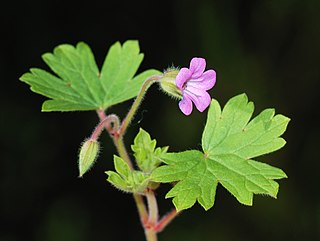
Geranium rotundifolium, is a species of annual herb in the family Geraniaceae. It is native in temperate climates across much of Europe, northern Africa, and southwestern Asia; its distribution is spreading north, in response to global warming. The species favours dry, sandy or stony habitat, including old walls, rail ballast, and building rubble, including in urban areas.
Hypericum australe is a species of plant in the family Hypericaceae. Individuals can grow to 24 cm tall.

Lampranthus multiradiatus, synonyms including Lampranthus roseus, known as the creeping redflush or rosy dewplant, is a species of shrub in the family Aizoaceae. They are succulent plants with grey-green shoots. They have a self-supporting growth form and simple, broad leaves. The daisy type flowers have yellow centres and petals that vary between pink and purple depending on the season.

Lonicera implexa, the evergreen honeysuckle, is a species of shrub in the family Caprifoliaceae. They are obligate climbers. They have simple, broad leaves and fleshy fruit. Individuals can grow to 2.5 m tall.

Lotus cytisoides is a species of perennial herb in the family Fabaceae. They have a self-supporting growth form and compound, broad leaves. Individuals can grow to 0.11 m.
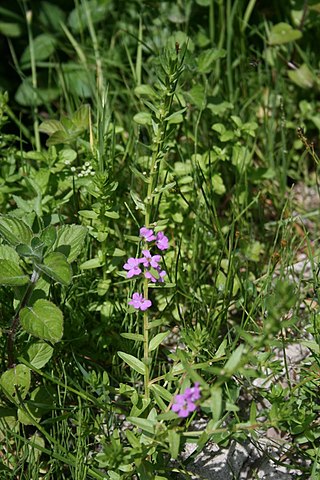
Lythrum junceum is a species of perennial herb in the family Lythraceae native to the Mediterranean Basin, West Asia and Macaronesia. They have a self-supporting growth form and simple, broad leaves. They are associated with freshwater habitat. Individuals can grow to 0.2 m.
Melilotus elegans, the elegant sweetclover, is a species of annual herb in the family Fabaceae. They have a self-supporting growth form. Individuals can grow to 0.39 m.
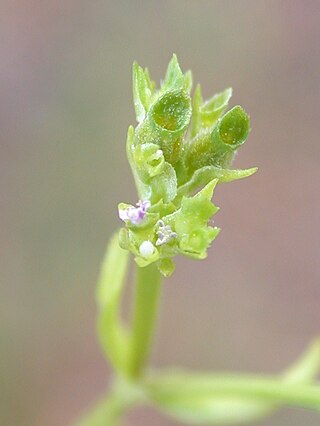
Valeriana muricata, synonym Valerianella muricata, is a species of flowering plant in the family Caprifoliaceae. It is an annual which ranges from Greece and the Eastern Mediterranean through western and central Asia, the Caucasus, and the western Himalayas.

Vulpia fasciculata, the dune fescue, is a species of annual herb in the family Poaceae. They have a self-supporting growth form and simple, broad leaves. Individuals can grow to 0.24 m.
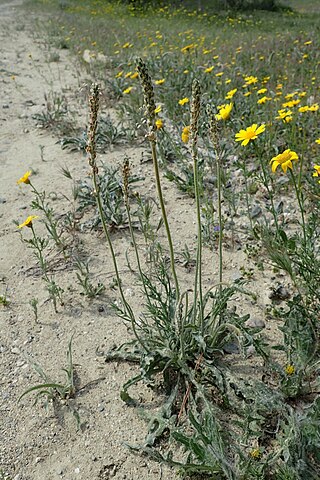
Plantago albicans is a species of perennial herb in the family Plantaginaceae. They have a self-supporting growth form, simple, broad leaves and dry fruit. Individuals can grow to 0.3 m.
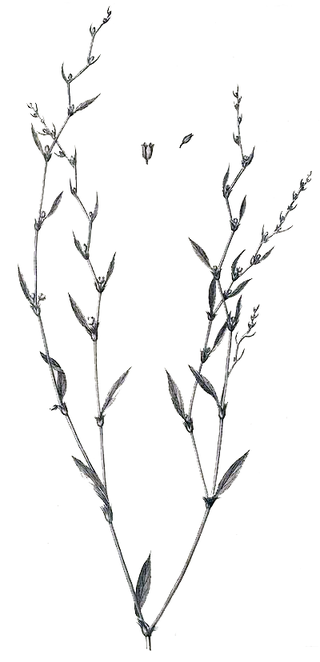
Polygonum bellardii, the narrowleaf knotweed, is a species of annual herb in the family Polygonaceae. They have a self-supporting growth form and simple, broad leaves. They are native to Southern Europe, West Asia and North Africa. Individuals can grow to 0.49 m.

Polypogon viridis, the beardless rabbitsfoot grass, is a species of perennial grass in the family Poaceae. They have a self-supporting growth form and simple, broad leaves. Individuals can grow to 0.43 m. They are native to southern Europe, Macaronesia, North and East Africa, and Asia.

Ruscus hypophyllum is a species of shrub in the family Asparagaceae. They have a self-supporting growth form. Individuals can grow to 0.42 m.

Tamarix africana, the African tamarisk, is a species of tree in the family Tamaricaceae. They have a self-supporting growth form and simple leaves. Individuals can grow to 6.3 m.
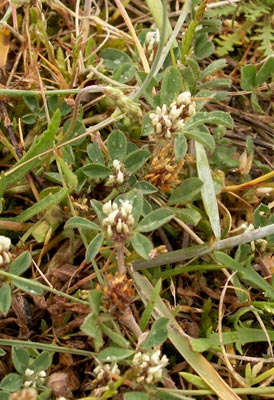
Trifolium scabrum, the rough clover, is a species of annual herb in the family Fabaceae. They have a self-supporting growth form and compound, broad leaves. Individuals can grow to 0.12 m.

Solorina crocea, commonly known as the orange chocolate chip lichen, is a species of terricolous (ground-dwelling) and foliose (leafy) lichen in the family Peltigeraceae. The lichen, which was first formally described by Carl Linnaeus in 1753, has an arctic–alpine and circumpolar distribution and occurs in Asia, Europe, North America, and New Zealand. It generally grows on the bare ground in sandy soils, often in moist soil near snow patches or seepage areas. Although several forms and varieties of the lichen have been proposed in its history, these are not considered to have any independent taxonomic significance.


















